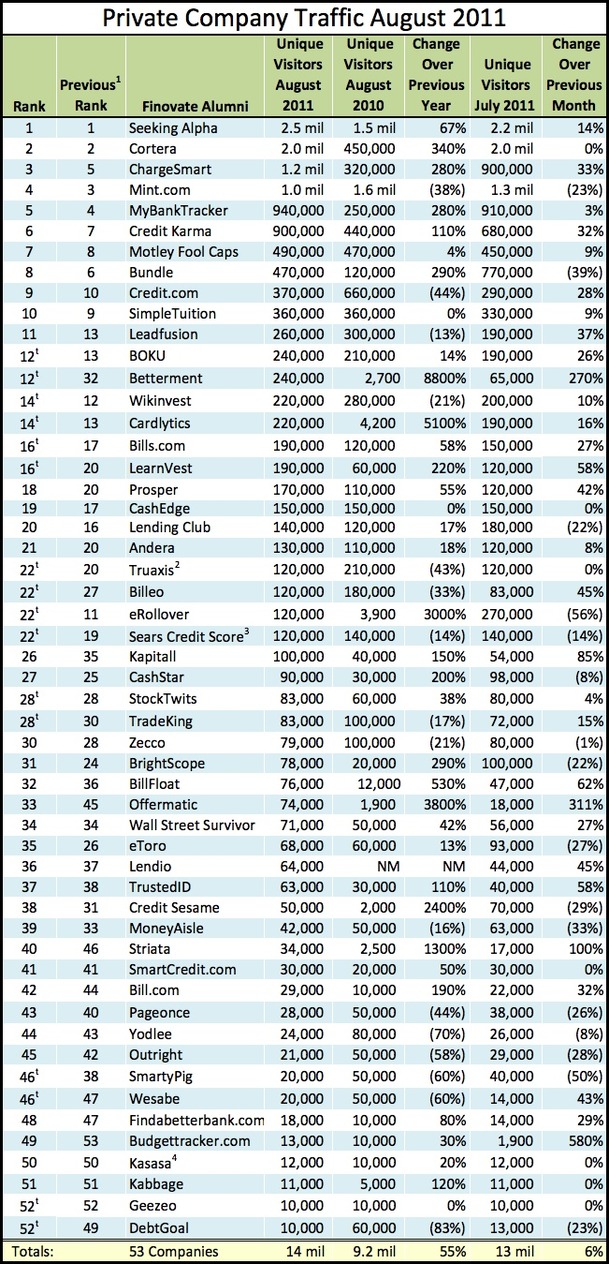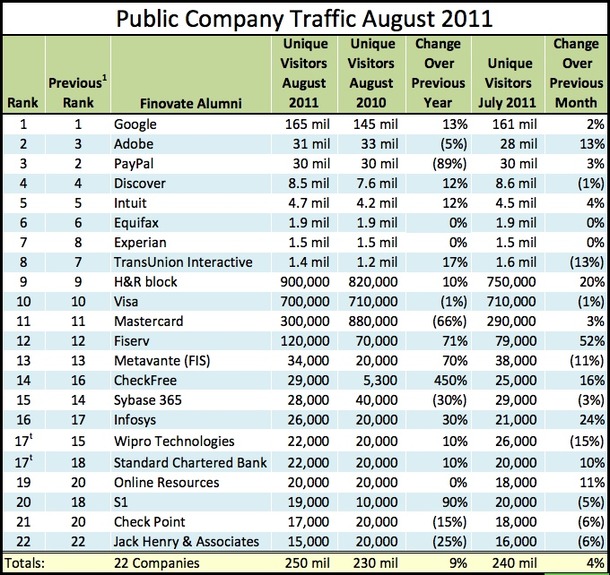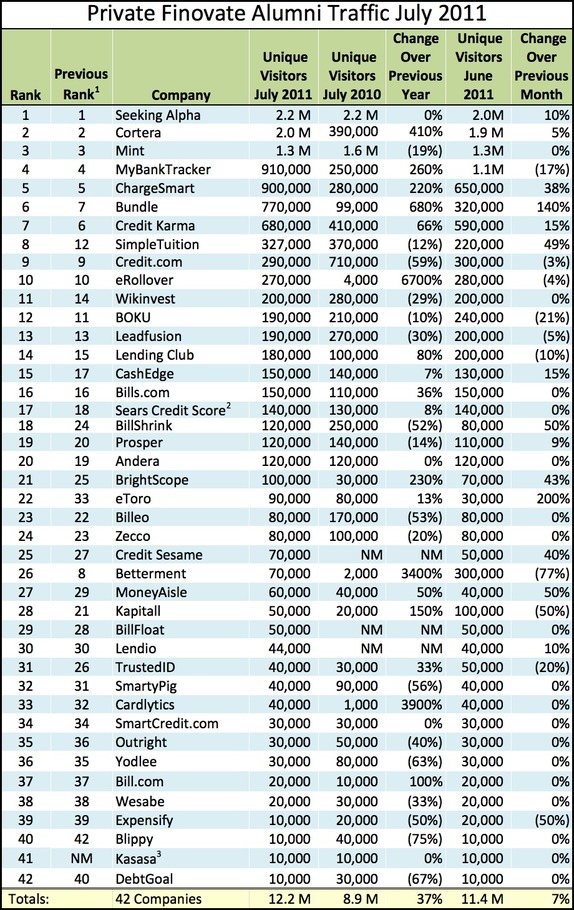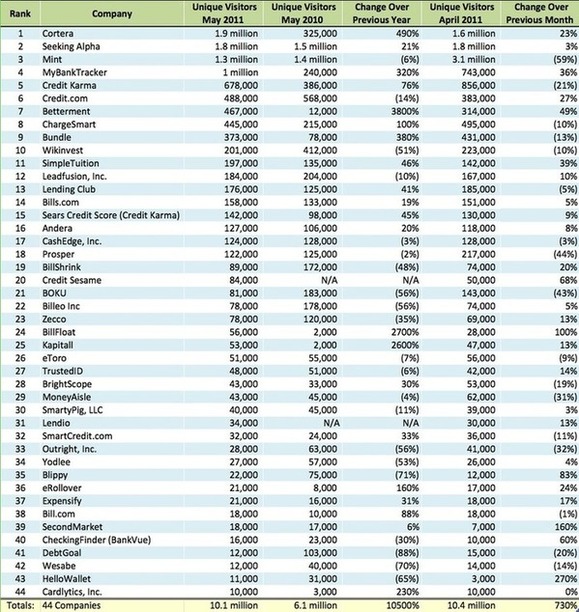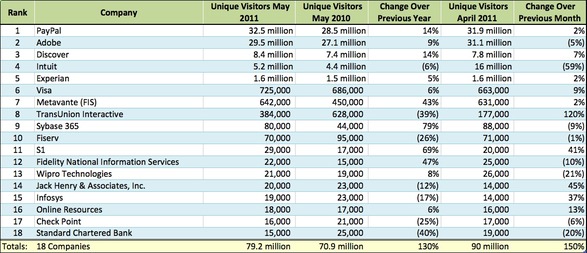 Today, Wesabe (company blog post) joined Geezeo (press release) in officially pursuing a strategy of white-labeling its personal finance services for banks and credit unions (note 1). Wesabe CEO Marc Hedlund told me they have three deals in various stages of the contract process, but none have signed on the dotted line yet.
Today, Wesabe (company blog post) joined Geezeo (press release) in officially pursuing a strategy of white-labeling its personal finance services for banks and credit unions (note 1). Wesabe CEO Marc Hedlund told me they have three deals in various stages of the contract process, but none have signed on the dotted line yet.
You can get an idea of how this will play out by visiting Wesabe’s first co-branded site at the UK’s Daily Telegraph (see screenshot below). However, in the banking rollout, the service can truly be white labeled with no mention of the Wesabe name. Wesabe provided a mockup of its white-label product for the fictitious Springboard Bank (see second screenshot below).
As much as I love online PFM sites, the future for most financial management activity is within the confines of online banking sites (note 2). Why? Most people do NOT enjoy tagging purchases, tracking their budget, monitoring their net worth in real-time, or debating the latte factor.
Banking, like most chores, needs to be accomplished as efficiently as possible. And the easiest way to track financial activity is at the place the customer already knows, trusts, and uses, their online banking site (note 3).
That doesn’t mean there isn’t a place for Mint, Quicken and other PFM sites. Millions of consumers and small businesses pay close attention to every transaction. And they’ll invest time, and money, into standalone sites that offer state-of-the art tools and independent perspectives.
But by partnering with full-featured PFMs like Wesabe, banks and credit unions give customers little reason to look elsewhere. Wesabe is particularly well-suited for the role of financial institution service provider (note 4):
- Technology: It owns the aggregation engine, so they have more flexibility in pricing and contract negotiations
- API: Wesabe has featured a public API since 2007, so it’s easier for bank developers to hook into its rich dataset
- Features: Has state-of-the-art user interface including a Twitter interface, widgets for Mac and Windows Vista, an iPhone-optimized site, and soon an iPhone app
- Brand: It has taken the high road….positioning the Wesabe brand as an unbiased financial guide; in fact, they’ve never taken advertising or commissions from financial providers
- Experience: Launching in 2006, they have been around longer than most other players, giving them credibility and a better longitudinal database
- Traffic: Of independent PFM sites (see Jan. traffic here), Wesabe trails only Mint and Geezeo in monthly traffic (120,000 unique visitors in Feb according to Compete), so it brings an established community and financial database to their financial institution clients
Make vs. buy
For a financial institution, the advantage of working with Wesabe vs. building PFM capabilities in-house include:
- Speed to market: Outsourcing allows FIs to get the PFM features in to the market much faster; depending on level of integration, could launch in a few months
- Integration: Although young, Wesabe is an experienced aggregator and technology company; this expertise can be tapped to provide integrate bill payment and funds transfer capabilities
- Existing community: FIs can leverage the vibrant Wesabe community to instantly provide interesting content and community
- Cost savings: Gives the financial institution state-of-the-art features much faster, and usually at a lower cost, than building them in-house
Wesabe’s co-branded site at UK’s Daily Telegraph (link) (18 March 2009)

Wesabe mock-up of white-labeled PFM interface (18 March 2009)

Notes:
1. Wesabe’s new service is called Springboard and Geezeo’s is Spectrum.
2. Assuming banks and credit unions offer a reasonable set of personal finance management tools.
3. For more info, see our Online Banking Report on Personal Finance Features for Online Banking and Online Banking Report on Social Personal Finance.
4. Geezeo also boasts similar benefits; while it’s a year younger and doesn’t own the aggregation engine, its provider, CashEdge is already used and trusted by many large financial institutions, and Geezeo boasts higher traffic than Wesabe.
5. Come talk to Wesabe’s execs at our FinovateStartup 2009 conference, April 28 in San Francisco.
 Netbanker: Credit Karma Launches “Hands Free” Account Aggregation.
Netbanker: Credit Karma Launches “Hands Free” Account Aggregation.
 Source: Compete.com retrieved the week of October 26, 2011
Source: Compete.com retrieved the week of October 26, 2011
